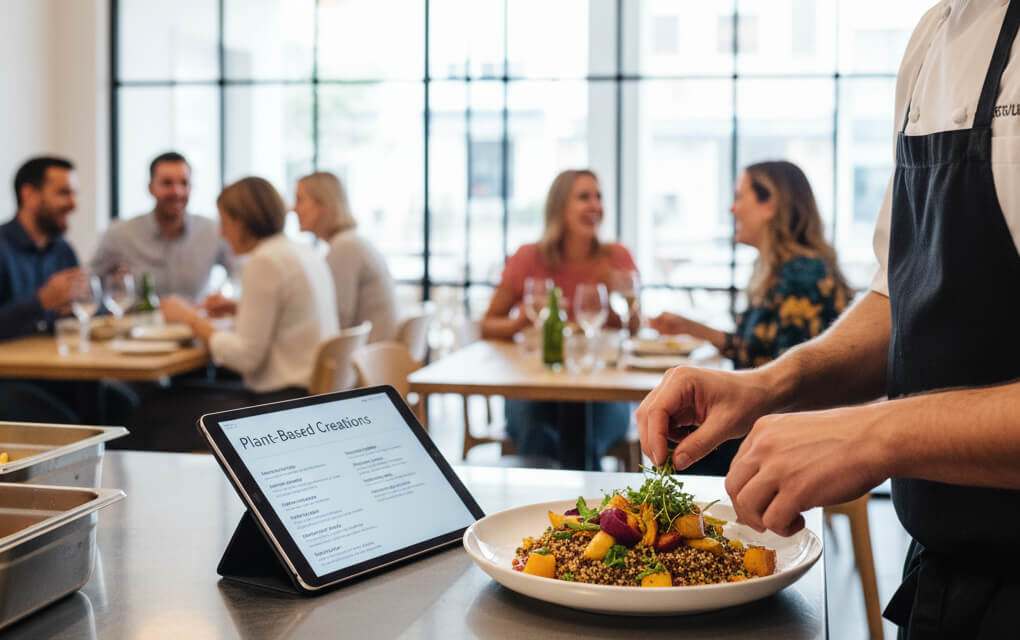October 06, 2025

Plant-based dining is no longer just a trend—it’s a cultural shift. Driven by health consciousness, environmental awareness, and ethical values, consumers are increasingly seeking out restaurants that offer more than just one token vegan dish. For restaurateurs, this presents not only a challenge but a major growth opportunity.
Forward-thinking restaurants that embrace plant-forward dining can reach new demographics, improve margins, and build a stronger, more sustainable brand — both in the dining room and online.
Today’s diners aren’t all strictly vegan or vegetarian. In fact, flexitarians—those who primarily eat plant-based but occasionally consume animal products—are the fastest-growing segment. They’re looking for restaurants that offer balance, innovation, and quality in their plant-based options.
And if you’re offering direct ordering via your own website, plant-based promotions can bypass delivery app fees and increase customer loyalty.
Competing With Delivery Apps: Why Direct Ordering Wins
It’s not enough to offer plant-based dishes—you need to showcase them in a way that grabs attention, drives discovery, and reflects your brand values.
Seasonal Campaigns That Drive Website Traffic & Reservations
How Reviews Impact Restaurant SEO (and What to Do About It)
A well-designed website can make a $12 vegan burger feel like a $20 experience. It’s all about presentation, usability, and trust.
For inspiration, look at how top-performing restaurant websites integrate food photography, storytelling, and UX:
10 Best Restaurant Websites (and What Owners Can Learn)
Plant-based diners are often values-driven, which means they’re more likely to develop emotional loyalty to restaurants that align with their beliefs.
Restaurants that tell a consistent, values-aligned story across both in-person and digital touchpoints earn deeper loyalty and stronger word-of-mouth.
The future of plant-based dining isn’t about imitation meat alone. It’s about culinary innovation, global flavors, and offering meals that surprise and delight — whether they’re plant-powered or not.
Plant-based dining is no longer a nice-to-have — it’s a strategic imperative. Restaurants that embrace this shift with thoughtful menus, engaging content, and strong digital execution will not only satisfy demand but also lead the conversation around sustainability, health, and modern hospitality.
And when your plant-based philosophy is reflected across your website, ordering experience, and in-house service, diners don’t just remember your food — they remember how it made them feel.
Stay up to date with the latest tips, expert insights, product reviews, and step-by-step guides to help you grow, create, and succeed—no matter your industry or passion.